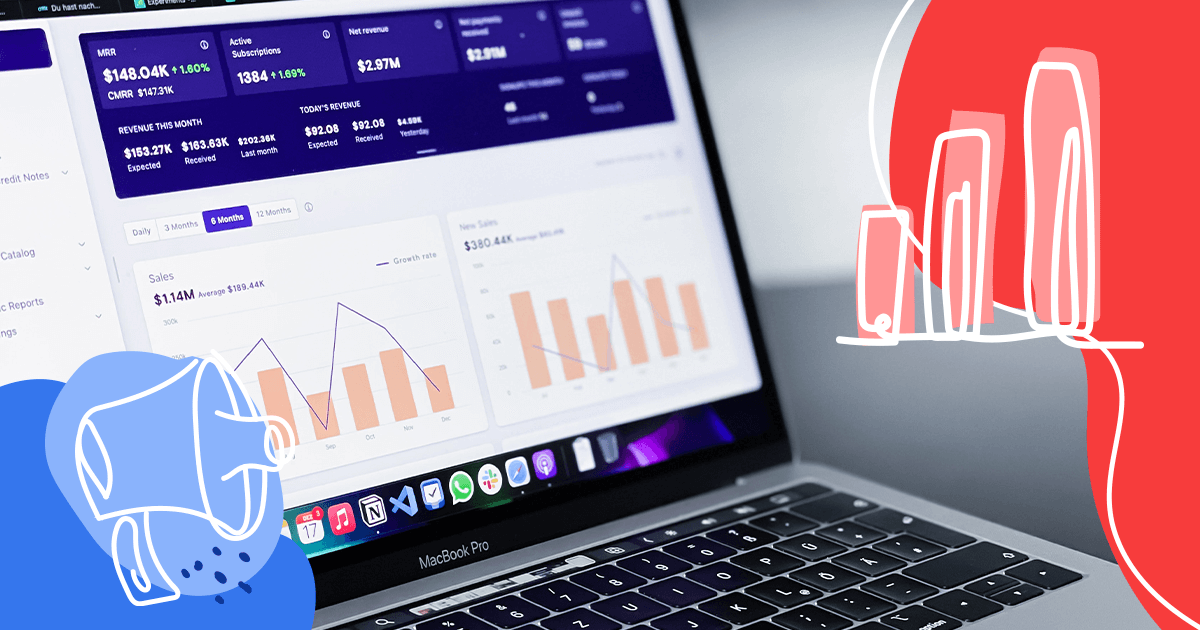Selling a product or service isn’t simply about what you are selling. It’s also about who you are selling to.
This is why creating detailed buyer personas is key to great marketing.
Luckily, Google Analytics provides all the tools you need to build these buyer personas and start targeting your potential customers more effectively.
Do you want to know more? Keep reading our blog post!
Why You Should Use Google Analytics To Create Buyer Personas
Buyer personas are made-up representations of your ideal customers.
To paint a picture of them, you’ll need to know as much data as possible. This includes your audience’s demographics, interests, desires, needs, and behaviors.
Google Analytics is the perfect tool for helping you create buyer personas because of all the information they provide you about your audience.
Instead of guessing at who you should be marketing to, you can use loads of real-time data to determine your ideal customer.
By using data to learn who your audience is, you can adjust your marketing strategy to fit their needs.
Below, you will know more about the specific Google Analytics reports that can help you.
Audience Reports
In Google Analytics, your Audience reports will provide you with a lot of data on your audience.
In the Audience Overview, you can see general information about your site, including your number of visitors, average session duration, bounce rate, and more.
To learn more about who your audience is and create your buyer personas, however, you’ll need to dig deeper into the more detailed audience reports.
Demographic Overview Reports
The first place you’ll want to look to start creating your buyer personas is the Demographic Overview reports.
To find this report, navigate to Audience > Demographics > Overview in the sidebar on the left-hand side of your screen.
There, you’ll find an overview of your visitors’ age and gender.
Age and Gender Reports
The overview will provide you with only basic information on your audience’s age and gender.
You can see more in-depth reports by navigating to Audience > Demographics > Age and Audience > Demographics > Gender.
By using this data, you can determine which demographics are bringing you the most traffic, have the highest bounce rate, are generating the most revenue, and more.
Even better is that you can view the age and gender data together.
One way to do this is by clicking on a specific gender while in the Gender tab.
Then, Google Analytics will provide you with a second-level report displaying data for age ranges for that specific gender.
By viewing age and gender data together, you can start painting a better picture of your ideal customers.
Age, Gender, and Interests Reports
Google Analytics also allows you to learn more about the interests of your audience.
To collect this data, however, you’ll need to enable “Advertising Reporting Features” in Google Analytics.
(Don’t worry, you won’t have to actually run any ads in order to collect this data.)
While still in the age and gender report, click on one of the age ranges to bring up a new report. This report will show you a column titled “Other Categories.”
Other Categories will display the specific interests of the people in the age and gender demographic you selected.
Affinity Category and In-Market Segment Reports
From the Age, Gender, and Other Categories report, you can also view two other age, gender and interest reports: Affinity Categories and In-Market Segment.
Affinity Category reports provide you with the lifestyle interests of people in the demographic you’ve selected.
In-Market Segment reports provide you with the purchase interests of the people in the demographic you’ve selected.
To view these reports, simply click on the “Other” dropdown next to “Primary Dimension,” located above the report.
From there, you can navigate to and select one of these other two interest categories.
It’s also worth noting, however, that you can access your interest reports in different ways that don’t include age and gender.
To do so, simply navigate to Audience > Interests.
From there, you can view Other Categories, Affinity Categories, or In-Market Segments and change your secondary dimension to see the interests of different segments of your audience.
Geo Reports
Google Analytics also provides you with data on your visitors’ language and location.
To find data on language, just navigate to Audience > Geo > Language.
Google determines users’ preferred language by looking at the language preferences of their browsers.
If you have a lot of visitors who have a preferred language that your site isn’t available in, it could be useful to create a translation option for your pages.
You can also view data on your audience’s location. Find this by navigating to Audience > Geo > Location.
Here, you can view segments of your audience by country, region, or even city.
Location data can provide you with lots of incredibly useful insights. For example, if you notice you have a particularly high conversion rate in one region, you may consider investing more in marketing to people in that area.
Technology and Device Reports
Finally, one more piece of Audience Report data worth looking at is reports on visitors’ browsers and devices.
To view which browsers your target audience is using, navigate to Audience > Technology > Browser & OS.
This data could be useful if you notice one browser has a particularly high bounce rate. It could indicate your site isn’t working correctly on a particular browser, giving you the opportunity to fix any problems.
You can also find out what devices your audience is accessing your site from.
To view this data, navigate to Audience > Mobile > Overview or Audience > Mobile > Devices.
Like the browser data, this data could also be useful if you notice something like a particularly high bounce rate on mobile devices.
This could indicate that your site isn’t optimized for mobile devices, and you should take the steps necessary to fix any problems.
Acquisition Reports
So far, we’ve only stayed in the audience reporting tab in Google Analytics.
However, there are some key pieces of data under the Acquisition tab that will help you learn more about your customer as well.
Acquisition Overview Reports
The Acquisition Overview report allows you to see some general information regarding the way visitors find your site.
To find it, simply navigate to Acquisition > Overview.
Here, you’ll see some broad data telling you what your most popular channels are. Examples of channels include Social (social media), Organic Search, Paid Search, and more.
This information is key to building out your buyer personas because it tells you where you should be targeting your potential customers.
Source/Medium Reports
While the Acquisition Overview report will give you some general information on your sources of traffic, you can dig deeper into the data by navigating to Acquisition > All Traffic > Source/Medium.
This will generate a report detailing both the specific origin of the traffic (source) as well as the channel (medium).
When combining this information with the other metrics in Google Analytics, it becomes incredibly valuable data.
For example, if your goal is to boost sales and you notice a high conversion rate on traffic from Instagram, you’ll likely want to invest more in your Instagram strategy.
Search Console Queries Report
The last report you should dive into is the Search Console Queries report.
It’s important to note, however, that to see this data, you’ll need to integrate your Google Search Console account with Google Analytics.
To find this report, navigate to Acquisition > Search Console > Queries.
Here, you can see what people are searching for on Google to find your pages.
You can then use this information to learn more about your audience’s pain points, which will help you create more valuable and useful content for them.
By better understanding your audience’s needs through their search intent, you can build a more robust buyer persona.
Putting Your Buyer Personas to Use
Now that you know how to learn more about who your audience is by utilizing Google Analytics data, you’re ready to start creating your first detailed buyer personas.
For example, if you noticed that your male visitors from New York City in the 25-34 age demographic with an interest in team sports had a particularly high conversion rate from your Instagram channel, you may want to consider investing more in Instagram ads targeting that demographic.
This way, you can drive more high-quality traffic to your site that is likely to convert.
However, if you noticed female visitors from New York City in the same age range had a high bounce rate, you may want to ignore trying to reach that demographic.
This benefits both your brand and users.
First, you avoid investing resources on traffic that isn’t likely to convert.
Second, by not targeting people who aren’t interested in your brand, you avoid wasting their time and allow them to interact with brands they might actually be interested in.
Wrap Up: Google Analytics Removes The Guesswork From Creating Buyer Personas
Google Analytics provides you with a lot of information about your audience. This allows you to create detailed, data-driven buyer personas.
While building buyer personas is a great place to start, you’ll also need to consider the buyer’s journey if you really want to convert your audience into customers.
Luckily, you can learn more about it in our Buyer’s Journey Mini Course!
2024 State of Marketing Report
Your golden ticket to crush your goals with data-driven insights!
2024 State of Marketing Report
Your golden ticket to crush your goals with data-driven insights!

![[Rock NA] State of Marketing Reports 2024 – Comkt Hubspot State of Marketing Report 2024](https://rockcontent.com/wp-content/uploads/2022/07/Banner-Fino-Rock-Convert-2500-%C3%97-500-px-19.png)








